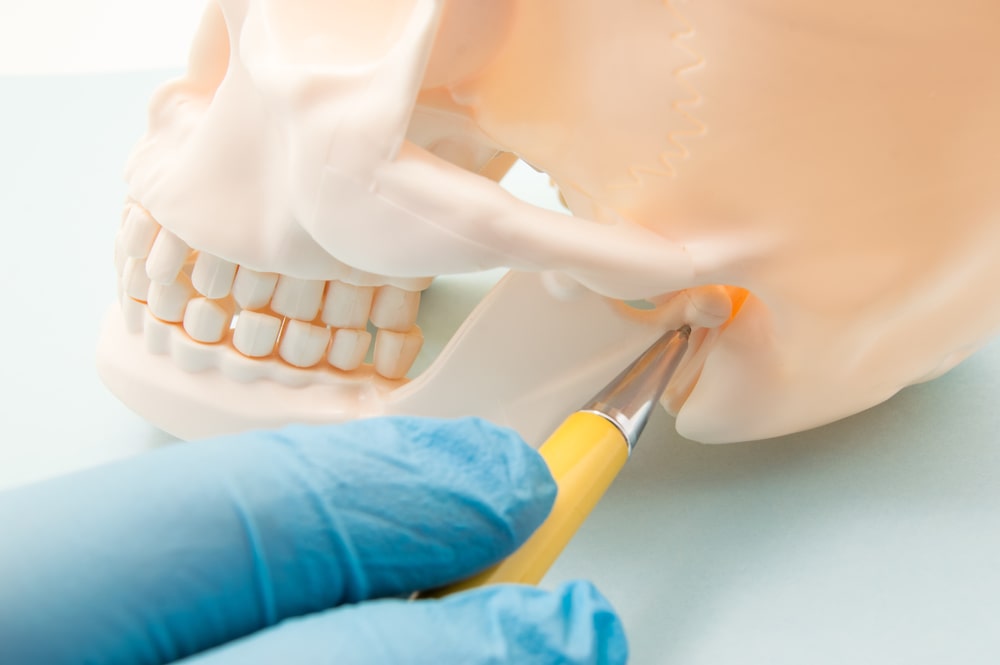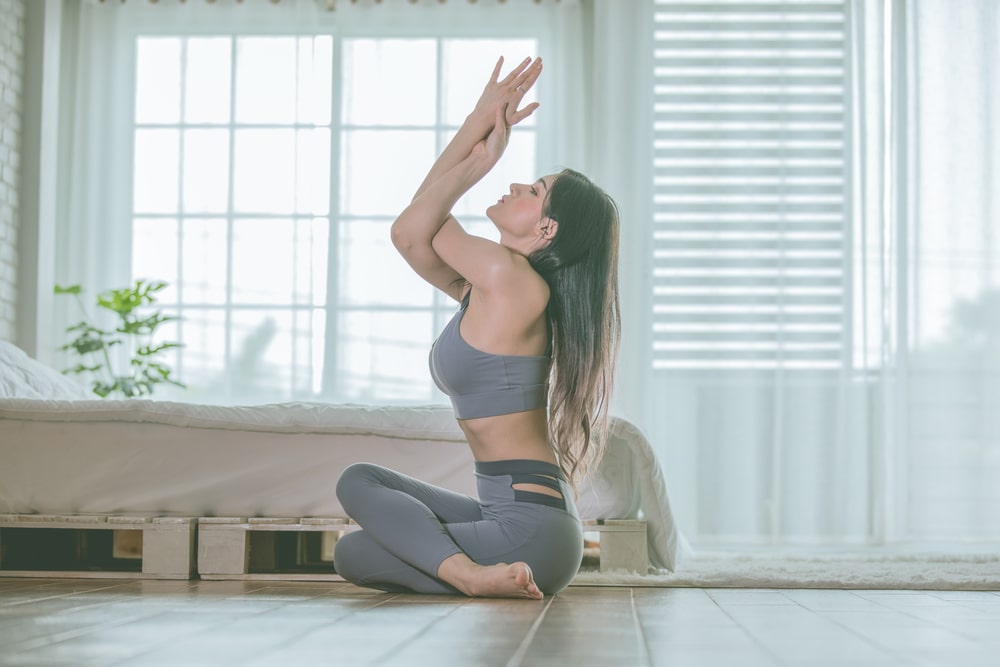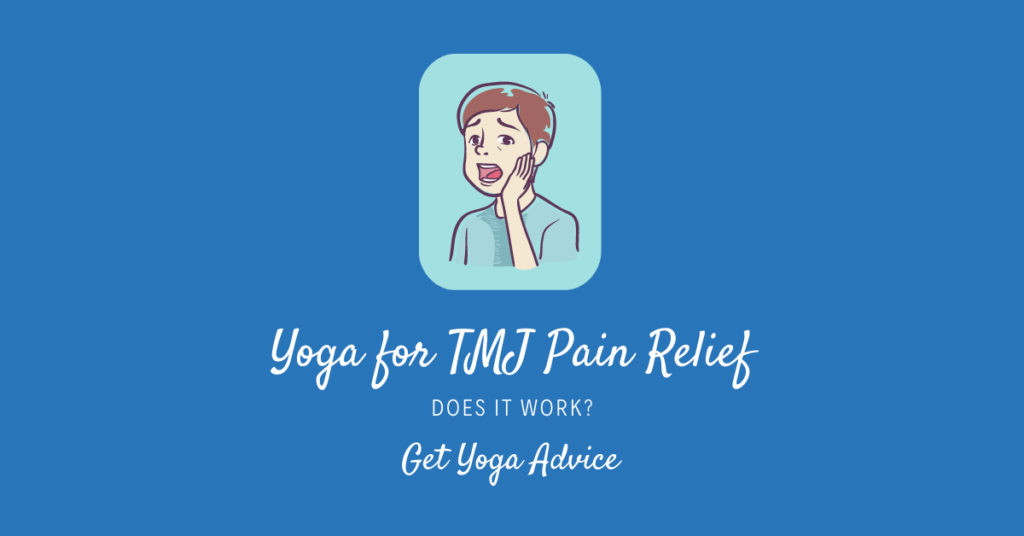The practice of yoga has immeasurable benefits to the body, from relaxation to reducing stress and anxiety. Many have turned to yoga as an alternative treatment for a number of underlying conditions.
Our bodies naturally hold tension in certain areas. Jaw pain and teeth grinding are two common responses when we are feeling tense. If you suffer from TMJ pain, adding yoga practice to your lifestyle might offer some pain relief alongside physical therapy.
Contents
What is TMJ Pain?

TMJ, more specifically, the Temporomandibular Joint is where part of your jawbone aligns with your skull. The bone itself is quite small and is surrounded by very powerful muscles. This allows us to speak, eat, and express emotions.
When this join is out of alignment, the pain can be unbearable. Women are three times more likely to suffer from TMJ pain. Why is this? It could be due to higher levels of estrogen, but it might also be because women tend to suppress their emotions and feelings.
As a result, women clench their teeth and the pain and muscle tension is felt in the TMJ.
Symptoms of TMJ Pain
TMJ pain varies from person to person but some of the more common symptoms to look for include:
- Clicking or popping sound when you open your jaw
- Headaches that start at the location of the joint (in front of your ear) and spread to the back of your neck muscles
- Pain while chewing or talking
- Bruxism; grinding of or clenching of the teeth
- Tenderness or pain along the jawline
If this sounds like you, we encourage you to investigate further by looking at what The Mayo Clinic has to say about TMJ.
Yoga for TMJ Pain
Depending on the severity of the pain or discomfort you feel at your temporomandibular joint, yoga can provide some relief.
The most obvious benefit of yoga practice is a reduction in stress and anxiety. If you can manage your daily stress, you will hold less tension in your TMJ. Yoga can encourage blood flow to areas of your body that are tense and help with realignment of your spine.
We’ve selected our top five yoga postures to help manage your TMJ symptoms. You might also find our yoga for stomach pain guide useful.
1. Head Tilts
To perform this exercise:
- Sit in a comfortable position with a tall spine.
- Soften your gaze as you reach your left arm out to the side.
- Gently tilt your right ear toward your right shoulder. Only tilt as far as you feel comfortable.
- Your torso and sit bones should not move.
- Inhale and exhale deeply for ten seconds.
- Bring your head back to center and repeat on the other side.
2. Chin Tuck
- Stay in a seated position.
- Gently tuck or pull your chin back (not down toward your chest).
- Imagine someone is pulling your chin back from the nape of your neck.
- Round your back on exhale and pull your chin up on inhale.
- Repeat five times.
3. Eagle Arms

- Begin by standing on a yoga mat or on the floor.
- Reach your arms out to the sides.
- Next cross your arms in front of you so that your right arm is over your left.
- Bend your elbows and allow your right elbow to rest in the crook of your left elbow.
- Your forearms should be perpendicular to the floor and the backs of your hands should be facing each other.
- Now adjust your hands so that your palms are facing each other.
- Gently raise your arms up and stretch your fingers to the ceiling.
- Hold this stretch for five to ten seconds and release your arms to the side.
- Repeat on your left side.
3.Hand Clasp
- In standing position, reach your arms behind you and clasp your hands together.
- Interlace your fingers and try to touch your palms together.
- On each inhale, extend your arms behind you.
- Try to keep your shoulders down as you expand your chest.
- Stay in this pose for several breaths.
4. Superman

This yoga posture focuses on your core and back muscles. A strong core partnered with strong back muscles will help you keep your shoulders down. The shoulders often hold our tension and connect directly with the TMJ and can cause discomfort and pain. To perform Superman:
- Begin by lying on your stomach.
- Your feet should be mat width apart and your forehead should be touching the ground.
- Reach your arms forward.
- Imagine Superman flying through the air.
- Exhale your breath and lift your arms and legs off the floor for as long as you can manage.
- Release your arms and legs and forehead back to the floor.
- Repeat this posture eight times.
How Often Should I Practice These Moves?
This series of postures can be performed every day. When you practice is up to you. Some like to start their day with this series, while others prefer to end their day with it.
If you are experiencing jaw pain because of TMJ, daily practice might alleviate your pain. In some cases, this practice might eliminate the pain of TMJ and prevent a reoccurrence.
Sleep Related TMJ
For some people, the pain of TMJ is a result of bruxism – the act of grinding or clenching your teeth which can occur while you sleep. Yoga alone cannot remedy this sleep related disorder. The use of a mouthguard as well as daily practice of yoga will help to manage the pain. Further reading on bruxism is available here.
Final Word on Yoga for TMJ Pain Relief
Our busy lifestyles are stressful on our bodies. Tension builds up and has a significant impact on our body and quality of life. Most commonly, women hold tension in their jaw causing pain and discomfort in the temporomandibular joint, also known as TMJ.
Yoga helps to manage stress and release tension which ultimately reduces the pain of TMJ dysfunction.
This short series of yoga postures can be practiced daily and with consistency might eliminate the pain of TMJ altogether. If the pain is unbearable, we encourage you to seek the help of a medical professional. For some, the combination of yoga and a mouth guard for sleeping can reduce the discomfort of TMJ.
If you liked this post, you might also be interested in our yoga for hangover guide.



